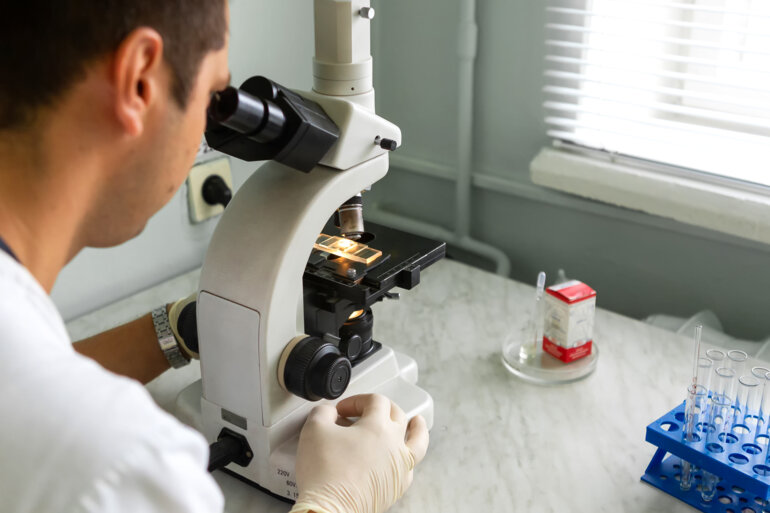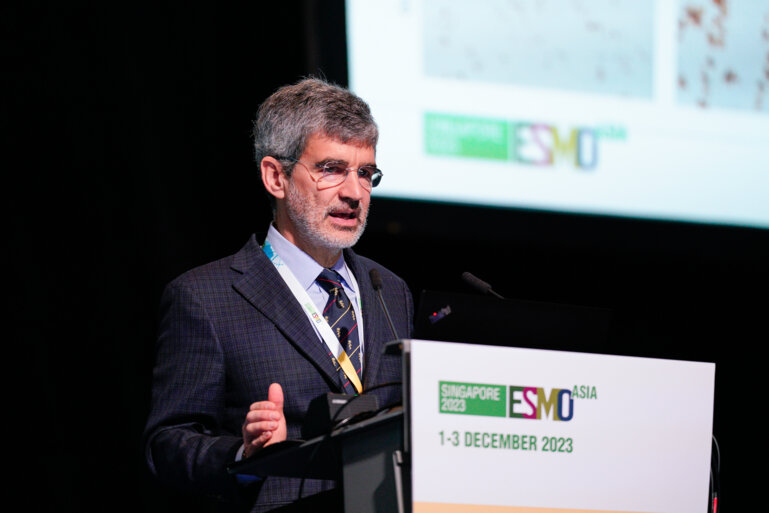Pioneering work by Joan Seoane and colleagues from Vall d’Hebron Institute of Oncology in Barcelona makes use of cerebrospinal fluid (CSF) to detect circulating tumour DNA (ctDNA) in patients with brain tumours. Where blood and plasma analysis have failed, a new era for liquid biopsies based on different physiological fluids for different tumour types is on the horizon.
The focus of our work in the laboratory at the Vall d’Hebron Institute of Oncology is the characterisation of brain tumours with the aim of finding ways to improve the treatment of patients with these cancers. In common with other aggressive tumour types, brain tumours demonstrate considerable intra- and inter-tumoural heterogeneity, and also evolve over time, so accurate characterisation is necessary to determine the best treatment. Unfortunately, tumour tissue samples are difficult to obtain in brain cancers and the procedure can be risky for the patient. Frustrated by this, we looked for other ways to help characterise brain tumours, and in 2013 we came across liquid biopsies, which at that time were using exclusively blood and plasma.
We quickly discovered, however, that patients with brain tumours do not exhibit tumour DNA in the blood, so blood or plasma liquid biopsies would be unlikely to yield useful information. That was when we hit upon the idea of using CSF – which is unique in its intimate contact with the brain tumour – as the liquid biopsy medium. Luckily, our position within a multidisciplinary team meant that we could quite easily obtain the necessary CSF samples from patients with brain tumours. The results of our first analysis were startling, showing a clear-cut superiority in the ctDNA content of CSF over that of plasma from the same patient (Nat Commun. 2015 Nov 10;6:8839; Clin Cancer Res. 2018 Jun 15;24:2812).
The advantage of CSF over plasma reflects not just the close contact of CSF with the brain tumour but also the fact that, unlike plasma, CSF is relatively uncontaminated by normal DNA. We were so encouraged by the findings from our initial study that we embarked on a joint Spanish project – involving the Hospital 12 de Octubre, the Hospital Clinic de Barcelona and the Vall d’Hebron Institute of Oncology, and funded by the Spanish Association Against Cancer (Asociación Española Contra el Cáncer, AECC) – to investigate the concept further and determine how it could be implemented in clinical practice.
We recently reviewed the evidence for CSF ctDNA for brain tumours and central nervous system metastases (Ann Oncol. 2019 Feb 1;30(2):211–218). The information we get from this approach provides us with a wealth of information about brain tumours that can be used to optimise treatment approaches. First of all, tumours can be effectively characterised molecularly and any genomic alterations determined. This enables us to accurately identify tumours with characteristic mutations, such as histone 3 (H3) mutations in midline gliomas, and so complement standard diagnostic techniques without having to perform surgical tissue biopsies. Data can also help us to learn more about intratumoural heterogeneity.
Diagnosis goes hand in hand with prognosis. We are currently looking at using CSF ctDNA analysis in medulloblastoma to distinguish between benign and malignant tumours and then to tailor treatment accordingly. Such a strategy will help to spare patients with benign tumours the often significant toxicities such as cognitive deficiencies and even secondary tumours that can be associated with aggressive anticancer treatment. CSF ctDNA will also allow us to monitor disease progression or regression and the evolution of tumours, including the development of mutations that can alter tumour aggressiveness or resistance to treatment. The information will also facilitate the implementation of precision medicine when appropriate, such as in cases of EGFR mutation or ALK translocations in patients with lung cancer-associated brain metastases. On a similar note, we will be able to detect mechanisms of acquired resistance, for example tumours with EGFR T790M, without the need for intracranial biopsies. Other future possibilities include the prompt detection of disease relapse, which could ensure earlier treatment intervention and an improved chance of an effective response, and the detection of minimal residual disease. Also, we should remember that serial CSF ctDNA sampling can be performed to provide a picture of the tumour over time, in a way that would not be feasible with tissues biopsies.
The benefits of CSF ctDNA are clear but there are inevitably some drawbacks too. Sensitivity is an issue. We are still not capturing all patients because the levels of CSF ctDNA are below the sensitivity threshold. This is particularly true for patients with low-grade tumours. Cost is another problem. In general, whole-exome sequencing is the preferred approach to allow tumour characterisation and to provide diagnostic and prognostic information, but this is expensive and is not available for most doctors to use in daily clinical practice. Finally, centres will need to have both the technology required to perform the analysis and the personnel trained to use it.
The use of CSF as a liquid biopsy medium has raised questions about the utility of other physiological fluids for different tumours, and groups in Europe and the USA are looking into using other media, including urine and saliva. I think that there will always be a place for tissue biopsies, not least because they provide information not available from liquid biopsies, for example on tissue structure and histopathology. Generally, the role of liquid biopsies will likely be to complement tissue biopsies, although where the risk associated with acquiring a tissue biopsy is considerable a liquid biopsy may be used on its own. Given the pace at which technology is advancing, I am confident that current barriers to the wider use of liquid biopsies – chiefly the need for cheaper and more sensitive equipment – will soon be overcome, and that this type of testing will be available in the clinic in the near future.
CSF circulating tumour DNA as a liquid biopsy for brain tumours
ezembed
Annals of Oncology, Volume 30, Issue 2, February 2019, Pages 211–218,https://doi.org/10.1093/annonc/mdy544







